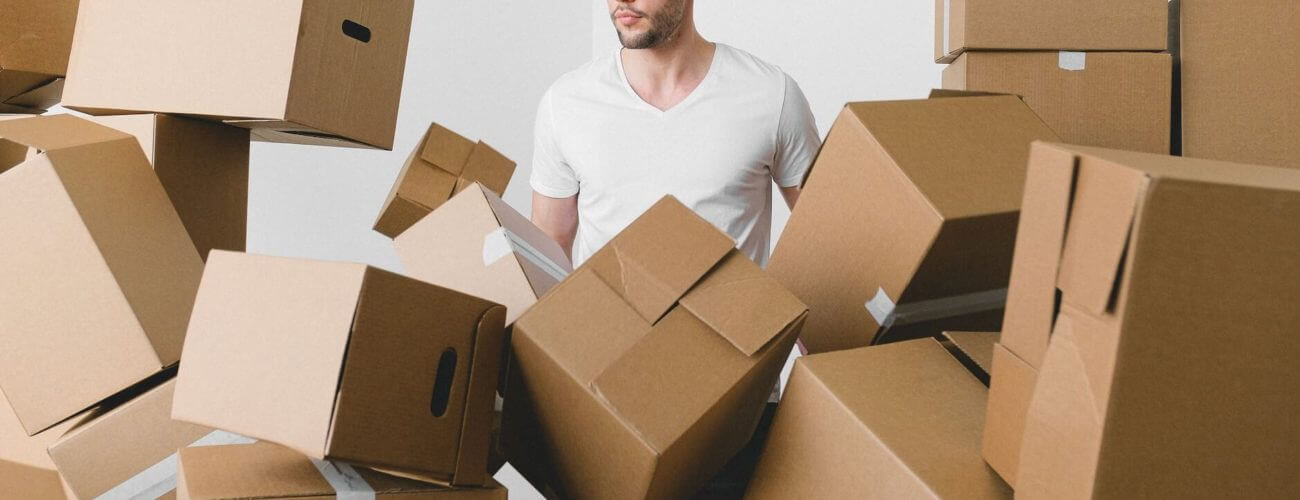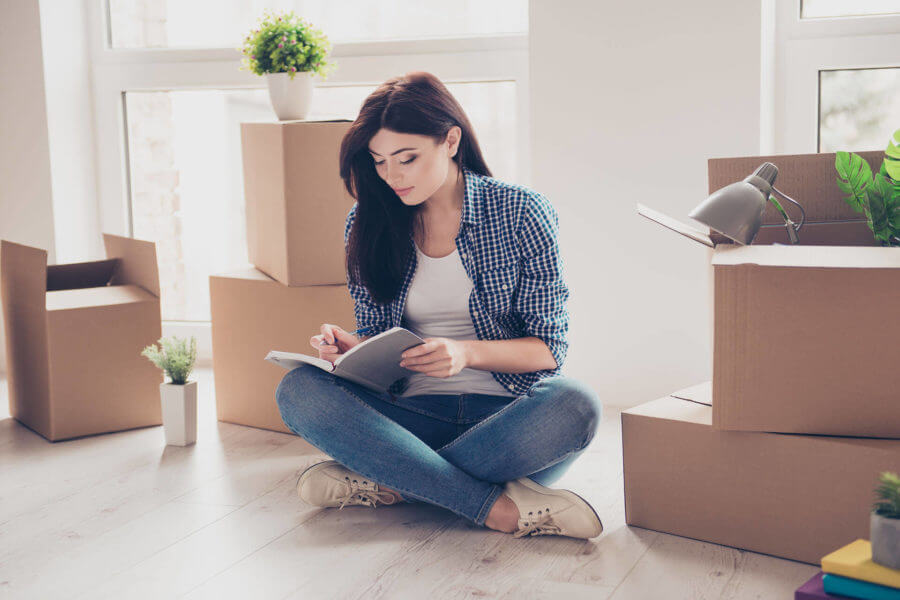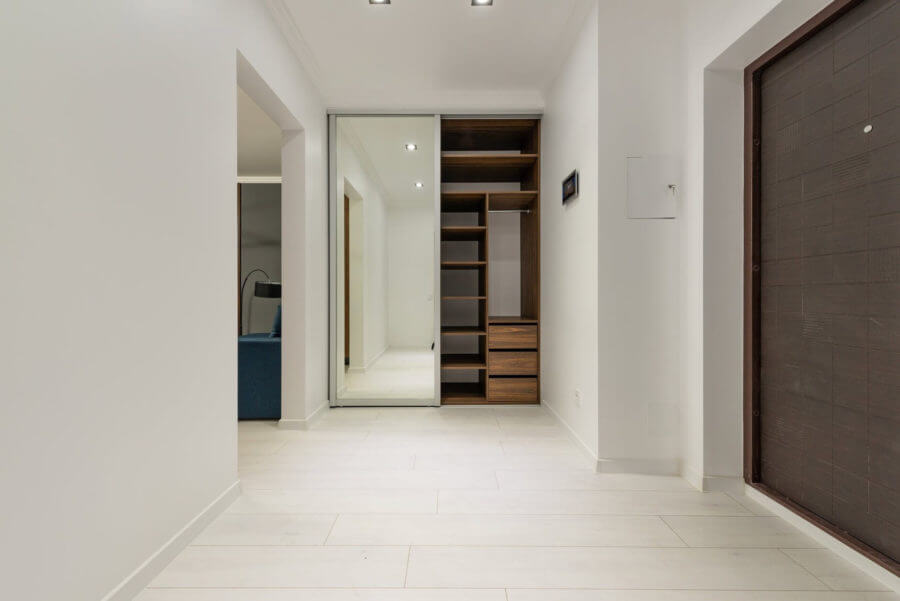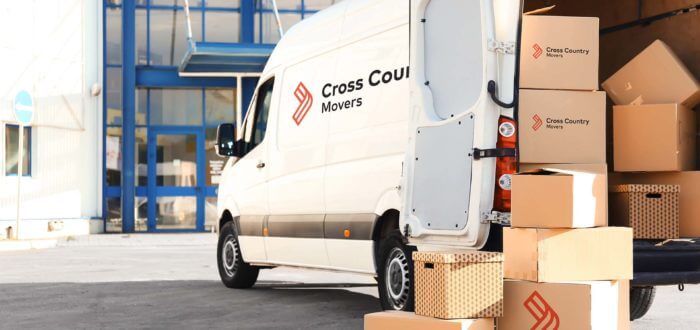

How Many Moving Boxes Do I Need?
Posted in Moving Essentials,Moving Tips & Tricks on January 2, 2023
Finding a new house, hiring movers, and packing, of course, are just a few of the many aspects of moving preparation. Considering all there is to do, asking yourself, “How many moving boxes do I need?” before going out to buy supplies will give you much-needed peace of mind, as you won’t have to worry about it in the middle of the move.
Deciding how many boxes you’ll actually need requires answering some questions like how much stuff you have and their size, are those items fragile, and how you will transport all of them. Be honest with yourself and figure out what’s your lifestyle, and don’t skip the decluttering part. Last but not least when getting ready for long-distance movers means you’ll have to learn what kind of boxes are there. Although it may seem like an overwhelming process, it’s something you’ll have to do right after booking cross-country moving services.
How Many Moving Boxes Do I Need – What Should You Consider Beforehand
There are many factors to consider when calculating the number of boxes necessary for your move. After all, you definitely need to organize your move if you want to have a stress-free relocation. So, take the time to figure out your needs before you start organizing and packing – it can save you a lot of hassle later. Here are some things to consider when trying to determine how many boxes you will need for your move:
- How much stuff do you have – If you have a lot of furniture and items, you will need more boxes than if you have only a few things. Make sure to make an inventory list of your belongings so that you can accurately estimate the number of boxes needed.
- What size are your items – If all your items fit nicely in boxes, you’ll probably need more of them than if you were just relocating furniture. Consider the size of the belongings you want to bring to a new home carefully when deciding how many boxes you will need.
- What kind of stuff do you have – Fragile items such as plates, glassware, and artwork require more packing materials for protection during transport. If you have a lot of these items, you may need more boxes to keep them secure.
- How will you be moving – If you are hiring a professional relocation company with full packing service, they may provide the packing materials needed for your move. In this case, it is important to make sure that the number of boxes provided by the company is sufficient for all your belongings.
No matter the size of your move, it is important to take the time to figure out how many boxes you need before you start packing. Knowing this information can help ensure all your items make it safely to your new home.

What’s the Size of the Place You’re Moving Out Of
There are various long-distance moving tips and considerations on how to move efficiently. Knowing how many boxes to utilize is among the most crucial (and difficult) tasks on your to-do list. But the number of bedrooms in your home is a neat trick to consider, though.
The number of boxes required for the transfer can also be estimated using this information as a starting point. Of course, there are other considerations, including the size of the rooms and the number of objects you have, but in general, the number of bedrooms is a good place to start to ease the stress of moving across the country.
The type of your home whether it’s an apartment, house, townhome, or condo – will determine the amount of storage space you have for packing items and materials. Let’s go over a general estimate of the number of boxes you’ll need according to the size of your house:
- 20–35 boxes for one to two bedrooms,
- 35 to 50 boxes for 3 to 4 bedrooms,
- 50+ boxes = 5+ bedrooms.
While these estimates might not always be precise, having even a rough number of containers is a great starting point, especially if you’re moving out for the first time. If you wish to be more precise, it’s probably best to use other factors when figuring out how many boxes you need in addition to the type and size of your home.

Figure Out What’s Your Lifestyle Before You Start the Boxing up Process
The next thing you should do while preparing for a move is to figure out how much stuff you have. The more items there are to pack up, the more boxes you will need. It may help to make a relocation inventory of all the items that will be going in each box so as not to forget any items during your packing process.
If your list gets too unwieldy, it might be time to start paring down and getting rid of any unneeded items before even starting the boxing-up process. For example, if you’re relocating to a different climate, there’s no need to pack all of your clothes, right?
Minimalists Will Have Fewer Things to Packs
If you tend to be more minimalistic, you are already doing a great job of decluttering. You can still take action to simplify the procedure, though. Get rid of unnecessary things first. Items that are outdated or no longer in use fall under this category. After you’ve done that, start arranging the rest of your personal belongings so they’re simpler to discover.
Making a packing list for a move is another thing minimalists may do to streamline their lives. It should only contain things that are necessary for a new house. You can avoid packing things you won’t use or need by doing this. Also, you’ll move safely and surely avoid unnecessary injuries.
Hoarders Will Have to Put a Bit More Effort
Before decluttering, there’s a lot of work to be done if you think of yourself as a hoarder. Admitting there’s a problem is the first step, which is often difficult to accomplish. Once you’ve come to terms with that, you may start trying to find a solution.
If your issue isn’t a full-fledged hoarding disorder, then you could work through it with a family member or a friend. Start by sorting through your belongings – alone or with someone and decide what to keep and what you can leave behind. Even though it might be a tough and stressful process, downsizing for a relocation is a vital step. You can even do a good thing and donate some of the stuff to charity organizations like Goodwill.
You can start organizing what is left in your home after you’ve managed to toss objects that aren’t needed. This will improve the appearance of your home and make it simpler to discover things when you require them. You’ll still have the memories you believed were associated with the things you tossed out, and you’ll be prepared to create new ones.

Should You Declutter at Any Cost if You Want to Downsize?
Decluttering is an inevitable part of the downsizing process when you move across the country. Moving out of a house filled with stuff and settling into a smaller home poses its own unique challenges, and having to declutter can add even more stress to the situation. It may be hard to get rid of items that have sentimental value or that you’ve collected over the years, but it’s important to make sure you keep only what is essential.
To start the decluttering process, try sorting items into categories such as furniture, appliances, clothing, and accessories. This will help you decide what can be donated or sold and what needs to come with you when you move. Once everything has been sorted, it’s time to make tough decisions about which items will stay and which will go.
For some more tips on how to declutter your home faster, check out the following video.
What Types of Boxes Are There?
Preparing for a move surely means you’ll be making a move-out list, which is exactly when you should be thinking about how many boxes you’ll need to pack everything. Or, perhaps, more importantly, are there diverse containers that you should be aware of? Will it depend on what your items are made of – will you need some special boxes?
The great news is that you may discover the ideal container for your needs among the variety of styles and sizes available. This way, you won’t have to worry about storage costs or additional relocation insurance coverage when packing a moving truck and shipping your goods to a different state.
We’ll examine some of the popular box types and their measurements in more detail.
Extra-Large Boxes
These containers have a volume of roughly 6 cubic feet. The only huge objects that should fit in these boxes are some large kids’ toys, towels, bedding, and pillows.
Large Boxes
The second-largest type has a volume of 4.5 cubic feet. They can even be used to pack smaller pieces of furniture. They should be used to carry bulky household objects like cushions and blankets.
Medium Boxes
The medium boxes are roughly 3 cubic feet in size, making them slightly bigger than the small ones. These containers are perfect for storing heavier items like shoes, dishes, and clothing.
Small Boxes
Typically, the smallest boxes have a volume of 1.5 cubic feet or less. Smaller stuff like books, small equipment, kitchen items, and some smaller toys pack up easily in these kinds of containers.
Check Out Other Supplies and Materials You’ll Need for Successful Packing
Most people are aware that they require boxes, but you also need other packaging supplies like bubble wrap, packing peanuts, and tape. Since boxes have gotten the most attention, it’s crucial to discuss several additional packing tools that can help your belongings arrive at their new place safely.
Depending on what type of materials are used in an item, different types of packaging may be required – for example, fragile items often need extra padding or wrapping to ensure they don’t get damaged during transit. Additionally, bulky items such as furniture may require specialty boxes or crates to fit properly in a truck or storage unit.
So, once you’ve calculated the number of boxes you’ll require, make sure you get them from a respected retailer to ensure they’re made of sturdy materials and will protect your possessions during the move.
Hire Reliable Cross-Country Movers, and Don’t Worry About Boxes and Other Supplies
It can be challenging for folks to estimate how many boxes they would need for their relocation, and that’s when hiring professionals can be more than just a good idea – it can be a lifesaver. The experts can precisely assess your demands and provide you with different relocation services that will ensure your stuff is packed and transferred to your new home in a secure manner, making the entire process significantly easier.






